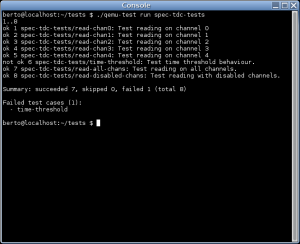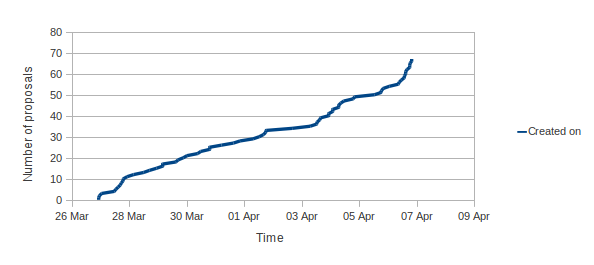Review:
Who Do You Serve, Who Do You Protect?, edited by Maya Schenwar, et al.
| Editor: |
Maya Schenwar |
| Editor: |
Joe Macar |
| Editor: |
Alana Yu-lan Price |
| Publisher: |
Haymarket Books |
| Copyright: |
June 2016 |
| ISBN: |
1-60846-684-1 |
| Format: |
Kindle |
| Pages: |
250 |
Who Do You Serve, Who Do You Protect? is an anthology of essays
about policing in the United States. It's divided into two sections: one
that enumerates ways that police are failing to serve or protect
communities, and one that describes how communities are building
resistance and alternatives. Haymarket Books (a progressive press in
Chicago) has made it
available for free in the aftermath of the George Floyd killing and
resulting protests in the United States.
I'm going to be a bit unfair to this book, so let me start by admitting
that the mismatch between it and the book I was looking for is not
entirely its fault.
My primary goal was to orient myself in the discussion on the left about
alternatives to policing. I also wanted to sample something from
Haymarket Books; a free book was a good way to do that. I was hoping for
a collection of short introductions to current lines of thinking that I
could selectively follow in longer writing, and an essay collection seemed
ideal for that.
What I had not realized (which was my fault for not doing simple research)
is that this is a compilation of articles previously published by
Truthout, a non-profit progressive
journalism site, in 2014 and 2015. The essays are a mix of reporting and
opinion but lean towards reporting. The earliest pieces in this book date
from shortly after the police killing of Michael Brown, when racist police
violence was (again) reaching national white attention.
The first half of the book is therefore devoted to providing evidence of
police abuse and violence. This is important to do, but it's sadly no
longer as revelatory in 2020, when most of us have seen similar things on
video, as it was to white America in 2014. If you live in the United
States today, while you may not be aware of the specific events described
here, you're unlikely to be surprised that Detroit police paid off
jailhouse informants to provide false testimony ("Ring of Snitches" by
Aaron Miguel Cant ), or that Chicago police routinely use excessive deadly
force with no consequences ("Amid Shootings, Chicago Police Department
Upholds Culture of Impunity" by Sarah Macaraeg and Alison Flowers), or
that there is a long history of police abuse and degradation of pregnant
women ("Your Pregnancy May Subject You to Even More Law Enforcement
Violence" by Victoria Law). There are about eight essays along those
lines.
Unfortunately, the people who excuse or disbelieve these stories are
rarely willing to seek out new evidence, let alone read a book like this.
That raises the question of intended audience for the catalog of horrors
part of this book. The answer to that question may also be the
publication date; in 2014, the base of evidence and example for discussion
had not been fully constructed. This sort of reporting is also obviously
relevant in the original publication context of web-based journalism,
where people may encounter these accounts individually through social
media or other news coverage. In 2020, they offer reinforcement and
rhetorical evidence, but I'm dubious that the people who would benefit
from this knowledge will ever see it in this form. Those of us who will
are already sickened, angry, and depressed.
My primary interest was therefore in the second half of the book: the
section on how communities are building resistance and alternatives. This
is where I'm going to be somewhat unfair because the state of that
conversation may have been different in 2015 than it is now in 2020. But
these essays were lacking the depth of analysis that I was looking for.
There is a human tendency, when one becomes aware of an obvious wrong, to
simply publicize the horrible thing that is happening and expect someone
to do something about it. It's obviously and egregiously wrong, so if
more people knew about it, certainly it would be stopped! That has
happened repeatedly with racial violence in the United States. It's also
part of the common (and school-taught) understanding of the Civil Rights
movement in the 1960s: activists succeeded in getting the violence on the
cover of newspapers and on television, people were shocked and appalled,
and the backlash against the violence created political change.
Putting aside the fact that this is too simplistic of a picture of the
Civil Rights era, it's abundantly clear at this point in 2020 that
publicizing racist and violent policing isn't going to stop it. We're
going to have to do something more than draw attention to the problem.
Deciding what to do requires political and social analysis, not just of
the better world that we want to see but of how our current world can
become that world.
There is very little in that direction in this book.
Who Do You
Serve, Who Do You Protect? does not answer the question of its title
beyond "not us" and "white supremacy." While those answers are not
exactly wrong, they're also not pushing the analysis in the direction that
I wanted to read.
For example (and this is a long-standing pet peeve of mine in US political
writing), it would be hard to tell from most of the essays in this book
that any country besides the United States exists. One essay ("Killing
Africa" by William C. Anderson) talks about colonialism and draws
comparisons between police violence in the United States and international
treatment of African and other majority-Black countries. One essay talks
about US military behavior oversees ("Beyond Homan Square" by Adam
Hudson). That's about it for international perspective. Notably, there
is no analysis here of what other countries might be doing better.
Police violence against out-groups is not unique to the United States. No
one has entirely solved this problem, but versions of this problem have
been handled with far more success than here. The US has a comparatively
appalling record; many countries in the world, particularly among
comparable liberal democracies in Europe, are doing far better on metrics
of racial oppression by agents of the government and of law enforcement
violence. And yet it's common to approach these problems as if we have to
develop a solution de novo, rather than ask what other countries
are doing differently and if we could do some of those things.
The US has some unique challenges, both historical and with the nature of
endemic violence in the country, so perhaps such an analysis would turn up
too many US-specific factors to copy other people's solutions. But we
need to do the analysis, not give up before we start. Novel solutions can
lead to novel new problems; other countries have tested, working
improvements that could provide a starting framework and some map of
potential pitfalls.
More fundamentally, only the last two essays of this book propose
solutions more complex than "stop." The authors are very clear about
what the police are doing, seem less interested in
why, and
are nearly silent on how to change it. I suspect I am largely in
political agreement with most of the authors, but obviously a substantial
portion of the country (let alone its power structures) is not, and
therefore nothing is changing. Part of the project of ending police
violence is understanding why the violence exists, picking apart the
motives and potential fracture lines in the political forces supporting
the status quo, and building a strategy to change the politics. That
isn't even attempted here.
For example, the "who do you serve?" question of the book's title is more
interesting than the essays give it credit. Police are not a monolith.
Why do Black people become police officers? What are their experiences?
Are there police forces in the United States that are doing better than
others? What makes them different? Why do police act with violence in
the moment? What set of cultural expectations, training experiences,
anxieties, and fears lead to that outcome? How do we change those
factors?
Or, to take another tack, why are police not held accountable even when
there is substantial public outrage? What political coalition supports
that immunity from consequences, what are its fault lines and internal
frictions, and what portions of that coalition could be broken off, pealed
away, or removed from power? To whom, institutionally, are police forces
accountable? What public offices can aspiring candidates run for that
would give them oversight capability? This varies wildly throughout the
United States; political approaches that work in large cities may not work
in small towns, or with county sheriffs, or with the FBI, or with prison
guards.
To treat these organizations as a monolith and their motives as uniform is
bad political tactics. It gives up points of leverage.
I thought the best essays of this collection were the last two.
"Community Groups Work to Provide Emergency Medical Alternatives, Separate
from Police," by Candice Bernd, is a profile of several local emergency
response systems that divert emergency calls from the police to
paramedics, mental health experts, or social workers. This is an idea
that's now relatively mainstream, and it seems to be finding modest
success where it has been tried. It's more of a harm mitigation strategy
than an attempt to deal with the root problem, but we're going to need
both.
The last essay, "Building Community Safety" by Ejeris Dixon, is the only
essay in this book that is pushing in the direction that I was hoping to
read. Dixon describes building an alternative system that can intervene
in violent situations without using the police. This is fascinating and
I'm glad that I read it.
It's also frustrating in context because Dixon's essay should be part of a
discussion. Dixon describes spending years learning de-escalation
techniques, doing hard work of community discussion and collective
decision-making, and making deep investment in the skills required to
handle violence without calling in a dangerous outside force. I greatly
admire this approach (also common in parts of the anarchist community) and
the people who are willing to commit to it. But it's an immense amount of
work, and as Dixon points out, that work often falls on the people who are
least able to afford it. Marginalized communities, for whom the police
are often dangerous, are also likely to lack both time and energy to
invest in this type of skill training. And many people simply will not do
this work even if they do have the resources to do it.
More fundamentally, this approach conflicts somewhat with division of
labor. De-escalation and social work are both professional skills that
require significant time and practice to hone, and as much as I too would
love to live in a world where everyone knows how to do some amount of this
work, I find it hard to imagine scaling this approach without trained
professionals. The point of paying someone to do this work as their job
is that the money frees up their time to focus on learning those skills at
a level that is difficult to do in one's free time. But once you have an
organized group of professionals who do this work, you have to find a way
to keep them from falling prey to the problems that plague the police,
which requires understanding the origins of those problems. And that's
putting aside the question of how large the residual of dangerous crime
that cannot be addressed through any form of de-escalation might be, and
what organization we should use to address it.
Dixon's essay is great; I wouldn't change anything about it. But I wanted
to see the next essay engaging with Dixon's perspective and looking for
weaknesses and scaling concerns, and then the next essay that attempts to
shore up those weaknesses, and yet another essay that grapples with the
challenging philosophical question of a government monopoly on force and
how that can and should come into play in violent crime. And then essays
on grass-roots organizing in the context of police reform or abolition,
and on restorative justice, and on the experience of attempting police
reform from the inside, and on how to support public defenders, and on the
merits and weaknesses of focusing on electing reform-minded district
attorneys. Unfortunately, none of those are here.
Overall,
Who Do You Serve, Who Do You Protect? was a
disappointment. It was free, so I suppose I got what I paid for, and I
may have had a different reaction if I read it in 2015. But if you're
looking for a deep discussion on the trade-offs and challenges of stopping
police violence in 2020, I don't think this is the place to start.
Rating: 3 out of 10
 Contributing to Debian
is part of Freexian s mission. This article
covers the latest achievements of Freexian and their collaborators. All of this
is made possible by organizations subscribing to our
Long Term Support contracts and
consulting services.
Contributing to Debian
is part of Freexian s mission. This article
covers the latest achievements of Freexian and their collaborators. All of this
is made possible by organizations subscribing to our
Long Term Support contracts and
consulting services.
 I hope you had a nice Halloween!
I've collected together some songs that I've enjoyed over the last couple of
years that loosely fit a theme: ambient, instrumental, experimental, industrial,
dark, disconcerting, etc. I've prepared a Spotify playlist of most of
them, but not all. The list is inline below as well, with many (but not all)
tracks linking to Bandcamp, if I could find them there.
This is a bit late, sorry. If anyone listens to something here and has any
feedback I'd love to hear it.
(If you are reading this on an aggregation site, it's possible the embeds won't
work. If so, click through to my main site)
Spotify playlist:
I hope you had a nice Halloween!
I've collected together some songs that I've enjoyed over the last couple of
years that loosely fit a theme: ambient, instrumental, experimental, industrial,
dark, disconcerting, etc. I've prepared a Spotify playlist of most of
them, but not all. The list is inline below as well, with many (but not all)
tracks linking to Bandcamp, if I could find them there.
This is a bit late, sorry. If anyone listens to something here and has any
feedback I'd love to hear it.
(If you are reading this on an aggregation site, it's possible the embeds won't
work. If so, click through to my main site)
Spotify playlist:  I just released sbuild 0.66.0-1 into unstable. It fixes a whopping 30 bugs!
Thus, I'd like to use this platform to:
I just released sbuild 0.66.0-1 into unstable. It fixes a whopping 30 bugs!
Thus, I'd like to use this platform to:
 A good amount of the Debian
A good amount of the Debian 



 Friday was my last day at
Friday was my last day at 
 Miguel Landaeta reported Debian
Miguel Landaeta reported Debian  Working with open hardware
Some weeks ago at LinuxCon EU in Barcelona I
Working with open hardware
Some weeks ago at LinuxCon EU in Barcelona I 


 This year our efforts have paid off and despite there being more mentoring organizations than there were in 2011 (175 in 2011 and 180 in 2012), this year in Debian we got 81 submissions versus 43 submissions in 2011.
This year our efforts have paid off and despite there being more mentoring organizations than there were in 2011 (175 in 2011 and 180 in 2012), this year in Debian we got 81 submissions versus 43 submissions in 2011. The result is this year we ll have 15 students in Debian versus 9 students last year! Without further ado, here is the list of projects and student who will be working with us this summer:
The result is this year we ll have 15 students in Debian versus 9 students last year! Without further ado, here is the list of projects and student who will be working with us this summer:
 here's the list of RC bugs I've worked on during the last week:
here's the list of RC bugs I've worked on during the last week: